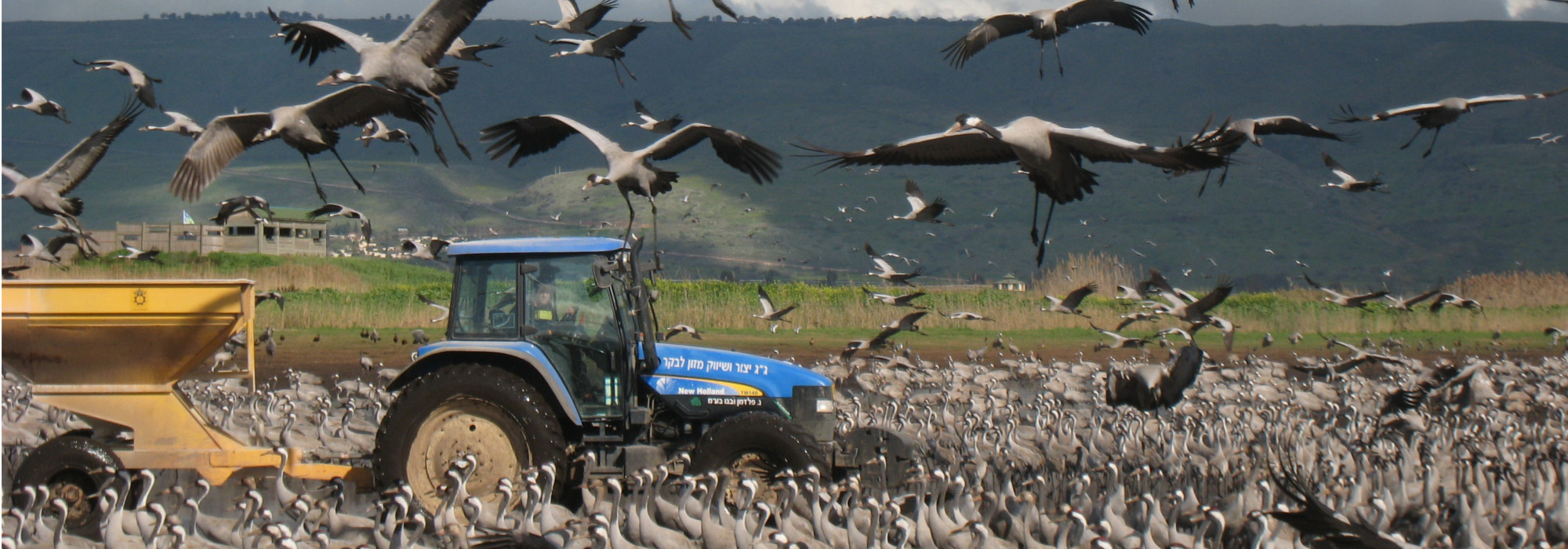Urban Biodiversity and ecology: birds in urban and agricultural environments
Kark Group’s work on urban ecology has had a substantial contribution to this fast growing scientific area studying biodiversity and ecology in urban areas, reflecting the expanding urban landscapes. Since 2008, more than half of the world human population lives in cities. In this framework, our research on urban birds has contributed to understanding the factors shaping the biodiversity remaining in urban environments and alien species in urban landscapes.
Urban landscapes provide a useful model for testing how species respond to changing environments. While many species disappear from urban areas, others are very successful in cities, contributing to a process termed ‘biotic homogenization’. Our research has contributed to gaining a better understanding of what traits are needed for succeeding in urban landscapes. Additionally, we tested hypotheses about biodiversity patterns of birds and their changes along urban gradients, linking to our research about invasive alien species. Many successful invasive birds are urban exploiters, and our work was one of the first to suggest which bird species may be candidates for exploiting urban landscapes and becoming successful invaders, thus enabling future research and policy advice on which species to exclude. In further work, applying state-of-the-art remote sensing tools, we found that satellite-derived indices of levels of urbanization correspond strongly with urban bird richness. This allows us to study large areas that are hard to access, but can be investigated using satellite images and remote sensing tools. These advanced spatial tools will be increasingly used and our work has provided important evidence of their ability to provide useful tools for future scientific work in both natural and urban environments at both local and global scales (see Kark et al. 2008 for discussion on the importance of discussion and collaboration between space agencies, decision makers, remote sensing experts and ecologists across the globe towards maximizing the gain from satellites for environmental and conservation-related purposes).
Impact and Joint projects
https://sustainability.uq.edu.au/campus-sustainability/biodiversity/bird-boxes
https://sustainability.uq.edu.au/article/2017/06/bird-boxes-let-local-wildlife-spread-its-wings
Selected Publications
The global distribution and drivers of alien bird species richness![]()
Blackburn T, Gaston K, Jones K, Redding D, Orme D, Kark S, Franks V & Collen B (2017). The global distribution and drivers of alien bird species richness. PLoS Biology 15(1): e2000942; DOI:10.1371/journal.pbio.2000942.
UQ News media release: https://www.uq.edu.au/news/article/2017/01/alien-birds-follow-global-wealth-and-power
Nest-site competition by invasive cavity-nesting birds on native cavity-breeders and its implication for conservation![]()
Charter M, Izhaki I, Ben Mocha Y and Kark S (2016). Nest-site competition by invasive cavity-nesting birds on native cavity-breeders and its implication for conservation. Journal of Environmental Management, 181:129-134. DOI: 10.1016/j.jenvman.2016.06.021.
The complex interaction network among multiple invasive bird species in a cavity-nesting community![]()
Orchan Y, Chiron F, Shwartz A and Kark S (2013). The complex interaction network among multiple invasive bird species in a cavity-nesting community. Biological Invasions, 15(2): 429-445. DOI: 10.1007/s10530-012-0298-6.
Tracking invasive birds: a programme for implementing dynamic open inquiry learning and conservation education![]()
Zion M, Spektor-Levy O, Orchan Y, Shwartz A, Sadeh I and Kark S (2011). Tracking invasive birds: a programme for implementing dynamic open inquiry learning and conservation education. Journal of Biological Education, 45(1): 3-12. DOI: 10.1080/00219266.2011.537833.
Motivations for Conserving Urban Biodiversity![]()
Dearborn, Donald C. and Kark, Salit (2010). Motivations for Conserving Urban Biodiversity. Conservation Biology, 24 2: 432-440.
Remotely sensed spectral heterogeneity as a proxy of species diversity: Recent advances and open challenges![]()
Rocchini, Duccio, Balkenhol, Niko, Carter, Gregory A., Foody, Giles M., Gillespie, Thomas W., He, Kate S., Kark, Salit, Levin, Noam, Lucas, Kelly, Luoto, Miska, Nagendra, Harini, Oldeland, Jens, Ricotta, Carlo, Southworth, Jane and Neteler, Markus (2010). Remotely sensed spectral heterogeneity as a proxy of species diversity: Recent advances and open challenges. Ecological Informatics, 5 5: 318-329.
The effect of enemy-release and climate conditions on invasive birds: a regional test using the rose-ringed parakeet (Psittacula krameri) as a case study![]()
Shwartz, Assaf, Strubbe, Diederik, Butler, Chris John, Matthysen, Erik and Kark, Salit (2009). The effect of enemy-release and climate conditions on invasive birds: a regional test using the rose-ringed parakeet (Psittacula krameri) as a case study. Diversity and Distributions, 15 2: 310-318.
Accurate prediction of bird species richness patterns in an urban environment using Landsat-derived NDVI and spectral unmixing![]()
Bino, G., Levin, N., Darawshi, S., Van Der Hal, N., Reich-Solomon, A. and Kark, S. (2008). Accurate prediction of bird species richness patterns in an urban environment using Landsat-derived NDVI and spectral unmixing. International Journal of Remote Sensing, 29 13: 3675-3700.
How do habitat variability and management regime shape the spatial heterogeneity of birds within a large Mediterranean urban park?![]()
Shwartz, Assaf, Shirley, Susan and Kark, Salit (2008). How do habitat variability and management regime shape the spatial heterogeneity of birds within a large Mediterranean urban park?. Landscape and Urban Planning, 84 3-4: 219-229.
Living in the city: can anyone become an ‘urban exploiter’?![]()
Kark, Salit, Iwaniuk, Andrew, Schalimtzek, Adam and Banker, Eran (2007). Living in the city: can anyone become an ‘urban exploiter’?. Journal of Biogeography, 34 4: 638-651.

